I've worked with enough companies that treat their NPS scores like precious babies that needed to be nurtured and coddled.
And to be perfectly frank, I'm tired of hitting my head against my desk because Net Promoter Scores are hot garbage.
I said what I said.
If NPS actually measured customer retention, companies with the identical scores would have the same customer retention rates, but they don't. And there are a myriad of reasons why this is, but the biggest issue is that NPS doesn't provide any actionable insight.
Your customers aren't making thoughtful decisions when they pick a number between 0-10. They're picking a score based on what they had for lunch or whether their kid kept them up all night. Meanwhile, your CEO is comparing your meaningless score to your competitor's equally meaningless score and calling it "strategy."
What You Think NPS Looks Like vs. What It Actually Is
In a world where things operate on logic, NPS should look like this: a big neutral middle section, with people who want you to die in a fire on the left and people who'd consider getting a tattoo of your logo on the right.
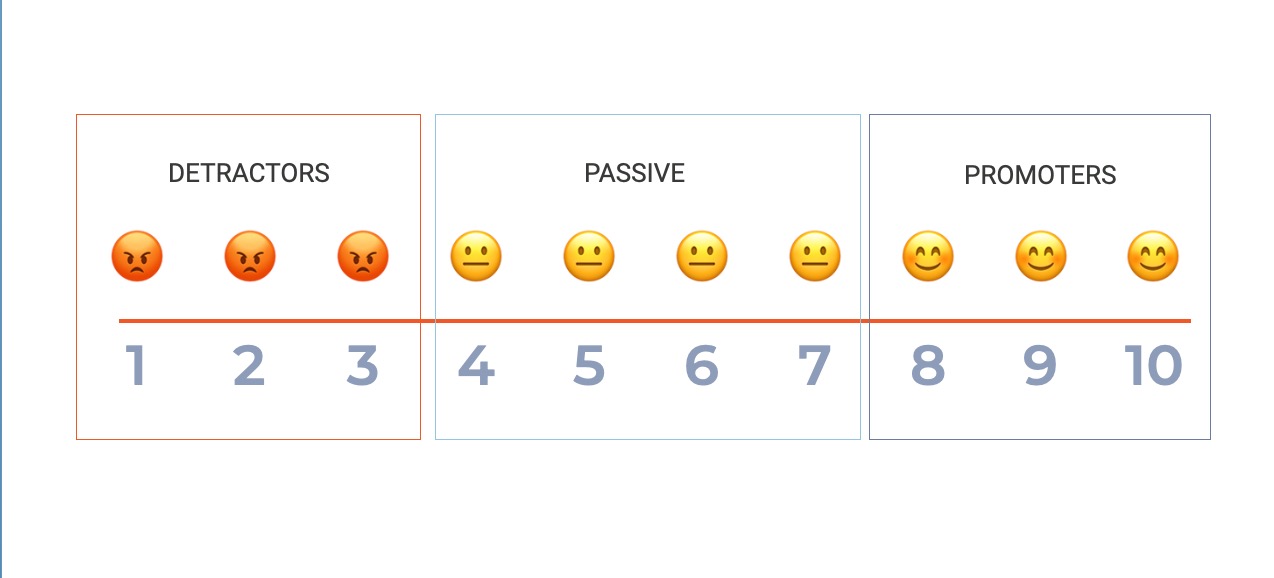
But that's not what the NPS continuum looks like. The scale is completely unbalanced, setting you up to fail from the start.
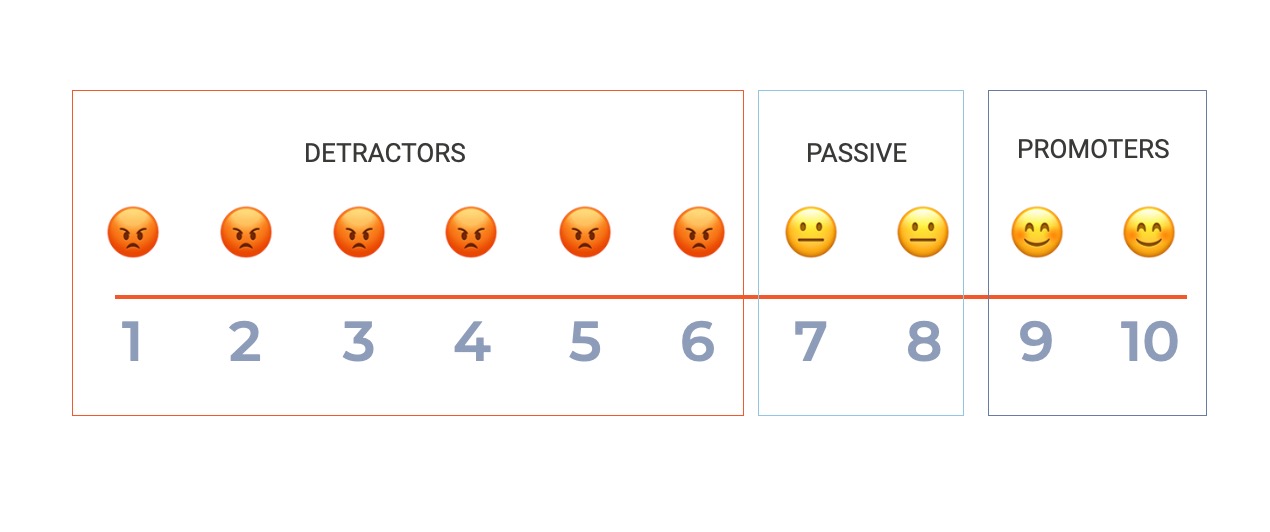
Big question here - what's the difference between someone who gives you an 8 versus a 9? Or a 6 versus a 7? The answer is nobody knows.
Your customers are literally making up numbers based on how they feel in that exact moment and based on factors you can't control.
There's zero consistency in what these numbers mean. And here's the bigger problem: when someone gives you a bad score, you have no idea why they did, or what you can do to fix it. There's no actionable insight that comes with NPS. None.
The Collection Problem That Drives Me Crazy
Then there's the collection chaos, some companies survey after every support interaction. Others send quarterly emails. Some have pop-up surveys that appear randomly. Each method catches people in completely different emotional states.
When you're comparing NPS scores, you're not just comparing customer satisfaction - you're comparing survey methodologies.
Let me give you some real examples:
Dropbox Sign popped up a survey right after I sent a document to be signed. Not too intrusive to the overall experience, but do you think DocuSign collects NPS the same way? What about Adobe Sign? There's no real way to measure apples to apples across different companies.
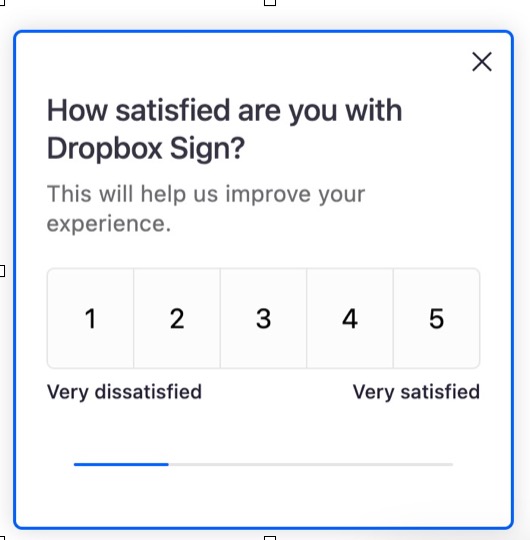
HEB (if you're from Texas, you know HEB) sends me an NPS survey every single week for their curbside service. As much as I love this service - you can take curbside grocery delivery from my cold, dead hands - there's no way I'm filling this out every week. I ignore it and move on.

Banana Republic Factory disrupted my shopping experience with an NPS survey while I was looking at a sweater. I was going to buy something, but this completely threw me for a loop. Not buying that sweater now, thanks.
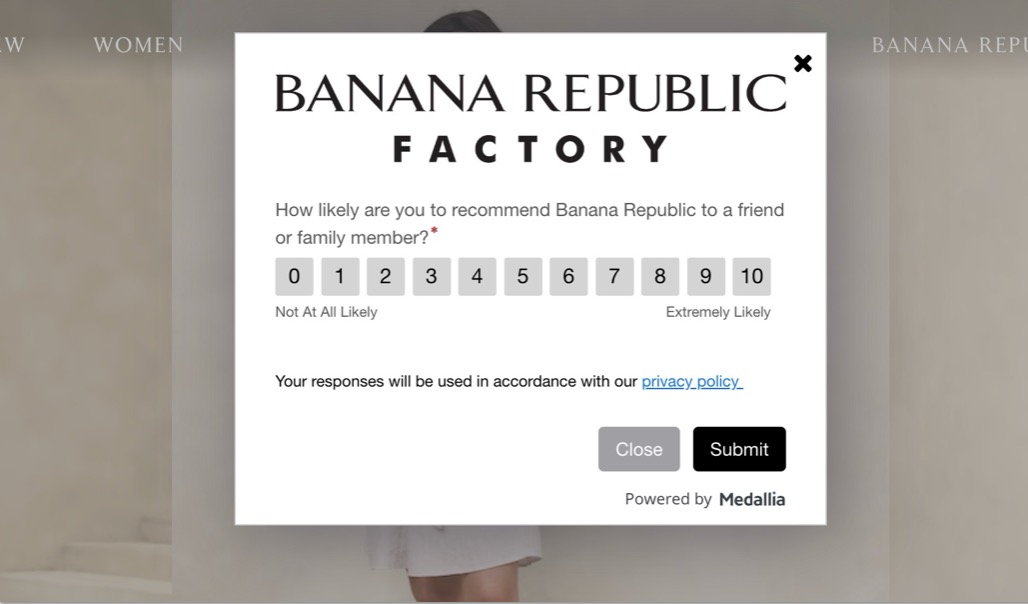
But Wait... Someone's Kinda Doing It Right
The best NPS example I've seen was from American Express. I had a problem and used their chat system. At the end, they gave me:
- A 5-star rating system
- Likelihood to recommend with a dropdown: yes, maybe, no
- An open text field where I could describe my experience
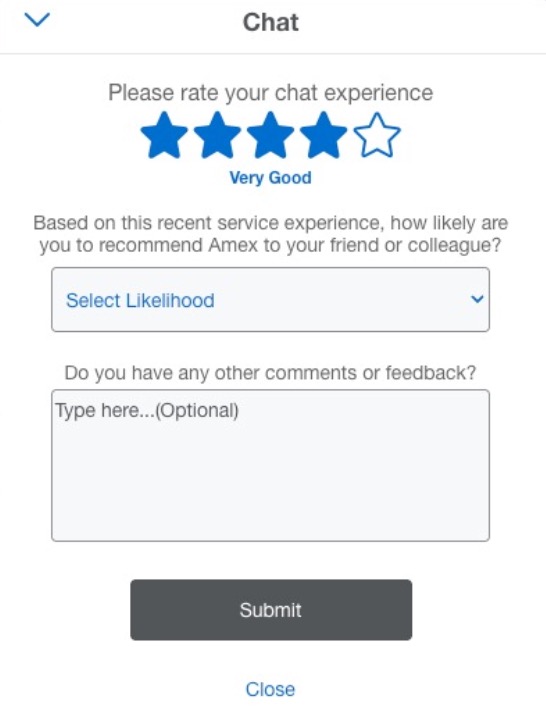
While this isn't exactly how I'd implement it (there are definitely refinements I'd make to encourage participation and get more specific responses), this is so much better than plunking down an NPS survey in the middle of my shopping experience.
What to Track Instead: The Referral Logic Test
So what should you track instead? These two questions. That's it.
- Have you referred us to someone else? (Yes / No, not yet / No, and I won't)
- What would you tell them about us? (open field)
Simple, right? But here's why it works better than any 10-point scale you've ever used.
Why This Works Better Than NPS
Humans are HORRIBLE at predicting future behavior accurately. If we were good at predicting future behavior, we'd never buy gym memberships at New Year's as part of a big resolution to finally get swole.
NPS asks people to predict whether they'll recommend someone, rather than asking them if they have already done so, and then building in an opportunity for actionable insights.
This referral logic test gives you:
- A quantitative score that's more relevant than any NPS score - saying 78% of our customers have referred us to a friend is compelling. And it helps you focus on what matters most: your customers, instead of obsessing over what your competitors' scores are.
- A qualitative score - with the open answers you can theme and count the issues that pop up
- Voice of customer data - use the words and phrases your customers use to describe the value they get from your product (or don't get) can be used to help refine messaging, product roadmaps, and even positioning strategy. Customer advocates are literally giving you a testimonial.
What Each Response Tells You
- "Yes, I've referred you" - These are your strongest advocates. Don't take them for granted - I see companies do this all the time. Nurture these relationships, ask them for more referrals, and pay close attention to how they describe you because that's your real value proposition. Not what your marketing team thinks it is, but what customers actually say.
- "No, not yet" - Satisfied but not passionate. These customers aren't unhappy, but they're not excited enough to put their reputation on the line by recommending you. This is your biggest opportunity group. Dig in and find out what's missing from their experience, what would make them passionate enough to refer, and you can convert them to advocates. Most companies ignore this group because they seem "fine."
- "No, and I won't" - Your early warning system. These customers are telling you they wouldn't actively recommend you. That's churn risk right there, and it's immediate. You need to understand why and either fix the relationship or prepare for them to leave. Don't waste time trying to save everyone - some relationships just aren't worth it.
Real Results from Real Companies
Here's what happened with Superior Fence & Rail. We asked their new homeowner customers about referrals, and look at these results:
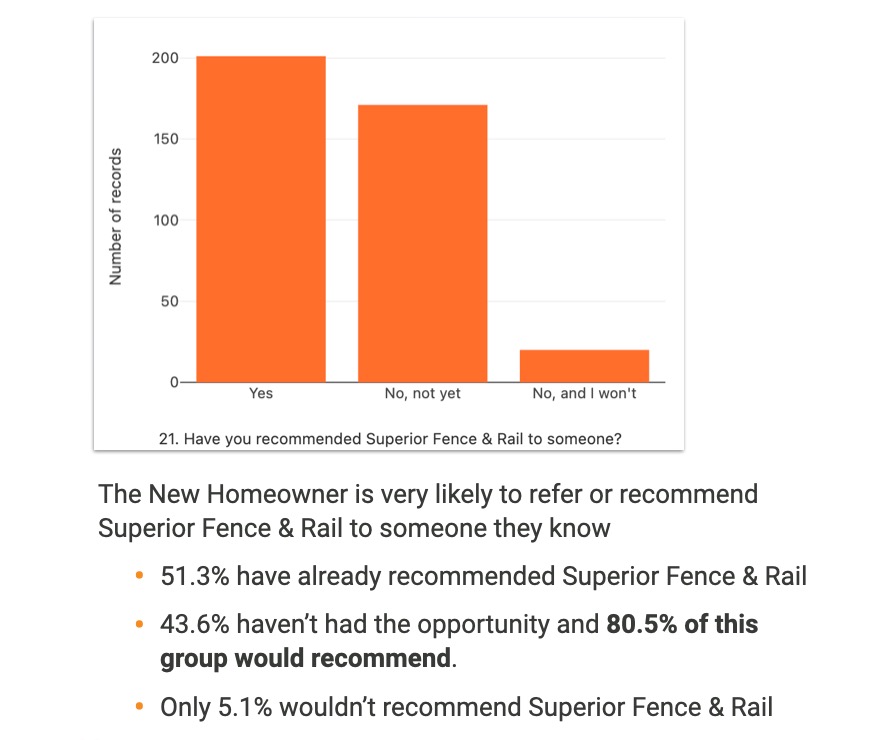
Over half - 51% - have already recommended them to someone. That's concrete evidence of loyalty, not a hypothetical score. Another 44% haven't had the opportunity yet, but when we asked if they would, over 80% said yes. Only 5% said they wouldn't recommend - that's your at-risk group right there.
This isn't insignificant because buying a fence is expensive and a highly considered purchase. This is clear, actionable data that tells you exactly where you stand with your customers.
But here's the real gold: What customers say when they describe their experience. This isn't marketing speak or what the company thinks sounds good. This is how real customers talk about real value. Refine and use this Voice of Customer data into your website, your sales decks, and your support knowledge base, so your customers see themselves consistently reflected in your messaging.
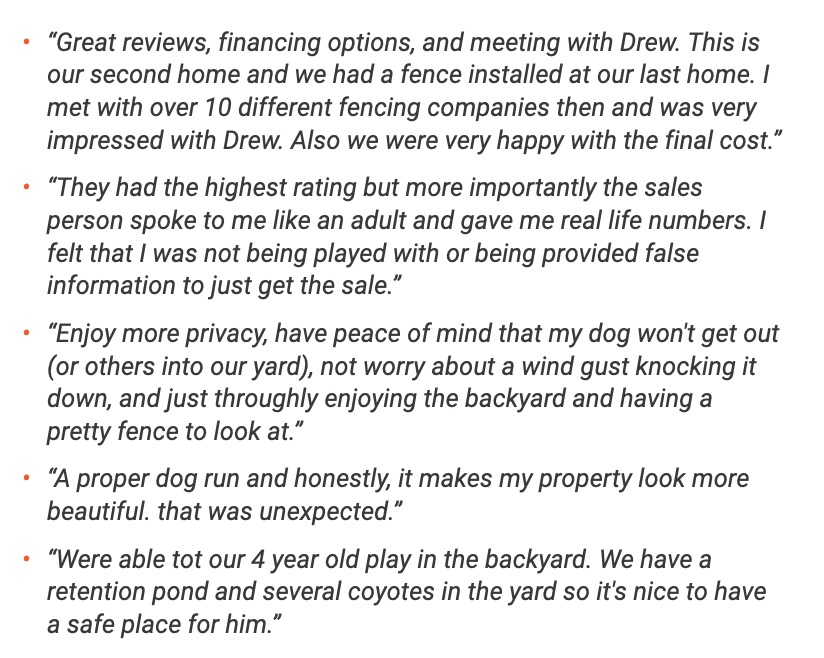
Getting Your NPS-Obsessed CEO On Board
I know what half of you are thinking right now: "This sounds great, but my CEO is obsessed with our NPS. They love comparing it to competitors and bragging about it in board meetings. How do I convince them to try something different?"
You don't have to abandon NPS overnight completely. Start by running both in parallel. Position this as additional customer insight, not a replacement.
- Frame it as risk management: "We're missing early warning signals. Our NPS looks good, but we're still losing customers we thought were happy. This helps us catch churn risk earlier."
- Lead with revenue impact: Do the math and show them. If we save 2% of customers anticipated to churn, this would be X amount of revenue we could save and recapture.
- Make it about competitive advantage: "While our competitors are stuck comparing meaningless benchmarks, we'll have actual insights about what drives referrals and loyalty."
- Start small: "Let's test this with one customer segment for 90 days and compare the insights to what we get from NPS."
Most executives will get on board when you show them actionable data they can use to make decisions.
Stop Wasting Time on Meaningless Benchmarks
Stop comparing your NPS to companies with different customers and different problems. You're wasting time on meaningless benchmarks.
Start asking questions that give you actionable insights from your best-fit customers. Past behavior beats future predictions every single time. Your customers will tell you exactly what you need to know - you have to ask the right questions.
If you're fighting the NPS battle, here's what I'd do: recommend a 90-day test. Run it in parallel to your existing NPS collection and focus on actionable insights. Spoiler alert: There aren't any actionable insights from NPS versus this approach, which also gives you insights and Voice of Customer data you can use.
Then report everything to teams who rely on customer insights to make better, faster, more confident decisions. If they like what they see, they can help advocate internally for switching to better referral signal capture.
Your customers are already telling you what you need to know. It's time to start listening.
Ready to Ditch NPS and Get Real Customer Insights?
You could implement this referral logic approach on your own, but most teams get stuck on the prioritization and setup, the executive buy-in, or figuring out how to turn those insights into actionable strategies.
If you're tired of meaningless metrics and want customer insights that help you make better, faster, more confident decisions, let's talk. We help B2B companies implement baseline customer referral signal programs that give you the real data you need to grow smarter.
No more guessing what your customers think. No more fire drills when retention suddenly drops. Just clear, actionable insights that positively impact your company's growth.
Let's chat and let's get you set up with customer insights that actually matter.
